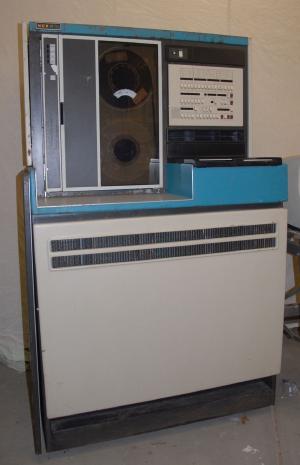NCR Computers - Overview
The National Cash Register company was established in the late 19th century and grew aggressively in the early 20th century until it dominated the US cash register market. During the Second World war NCR’s sophisticated electromechanical engineering and production facilities were employed in fields ranging from gunsights to the design and manufacture of US versions of the “bombe” cryptanalysis machine.
Perhaps influenced by its wartime work, NCR was early to recognise the significance of electronic computing and data processing and was an early developer of transistorised computer systems. NCR’s first large computer was the fully-transistor NCR 304, released in 1957. The NCR 315 system followed in 1962 and is noteworthy for the CRAM, an electromechanical marvel/monster that reminds us of the great problem of fast mass storage in that era.
By the late 1960s IBM was dominant in the US computer market, perhaps as a result of IBM’s Thomas Watson using the sales techniques that he’d learned and refined when he’d begun his career working for NCR. The US computer manufacturers of the late 1960s became known as “IBM and the BUNCH” (Burroughs, Unisys, NCR, Control Data & Honeywell) and most of the BUNCH fell by the wayside during the 1970s.
NCR survived and prospered in the 1970s by combining its long-established position in the cash register business with its new expertise in computers and data processing. NCR pioneered intelligent cash registers and linked these with store-level computers that could transmit point-of-sale data for central processing. This business remains successful today and while NCR is long out of the mainframe computer business it remains a leading player in point of sale equipment and data processing. There is an excellent site with data, pictures and presonal stories of NCR computers at The Core Memory. Highly recommended.
NCR 725 Store Level Computer
The NCR 725 is a special purpose computer intended to be the central element of a retail store’s network of point of sale terminals. It collected and processed point of sale transactions and saved the data on tapes that were sent to Head Office.
The 725 is interesting to DoPECC for two particular reasons:
- The core of the 725 is an NCR 605 processor.
- The NCR 605 is a 16-bit minicomputer constructed entirely from small-scale TTL ICs (7400 family). This fits with DoPECCs interest in machines that can be analysed, understood and kept operating.
- The 725 cabinet contains all the elements of a 1970s mainframe in a single 70s coloured box - panel switches, blinking lights and spinning tape reels.
The 725 is in storage while data to assist with restoration is searched for.
There is a particular need for:
- Hardware data and Service Manuals for the 605 processor and peripherals.
- Software - all of the original software environment has been lost.
If any reader has any information that may assist, please send a message via the About/Contact link

